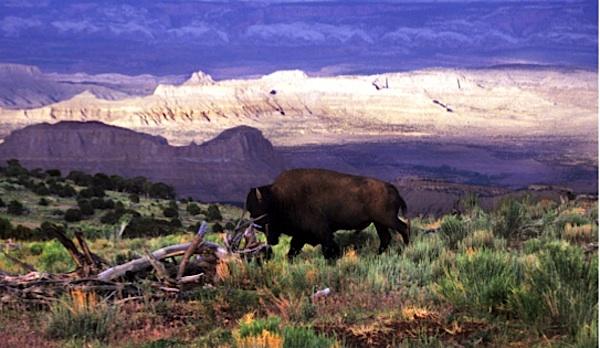
Heading into its centennial year, what must the National Park Service do to flourish?
Editor's note: Harry Butowsky spent more than three decades working for the National Park Service as an historian. He's worked for a handful of directors and seen much change in the agency. Understandably, he has an interesting perspective on the upcoming centennial of the National Park Service.
The National Park Service reminds me of a proud old ship sailing confidently across the North Atlantic. The captain is beaming and the passengers seem contented, at least, those traveling first class on the upper decks. It's below decks that the problems lurk. The crew is perhaps too easy going, believing the ship will always reach New York. However, the engines are old, the iron plating is thin, and the rivets are working loose. Granted, the Titanic is not a good analogy, since that ship was perfectly new. Otherwise, the analogy fits. The older things get'including institutions'the more they are in need of major repairs.
In the case of the National Park Service, the overhaul is long overdue. I spent my entire career in the History Division, which operates out of Washington, D.C. Some directors listened to the Division and others did not. Those that listened, I do believe, enjoyed smoother sailing in every division.
So, you will understand where I am coming from. I base my call for new backbone in the Park Service on good history. Only if the Park Service wants to tell a credible story can its centennial rise above mediocrity. My recommendations start with coming to grips with reality, and end with a call to historical arms.
This is my manual, if you will, for a great centennial, after which I invite you to offer your own. Just don't tell me that history is unimportant. In the Park Service, there is already enough of that myth going around.
Priority One: Address the Backlog
First, put this figure solidly in your mind'$11.5 billion. That's the backlog'the true funding shortage crippling all of our national parks. What is more, we can be sure that Congress is not likely to free up even a fraction of those needed funds. How can we be sure? Because the nation is $18 trillion in debt, with another $100 trillion in unfunded liabilities. At $4 trillion annually, the entire annual budget of the United States cannot possibly meet those backlogs. We have to address the Park Service backlog as part of that greater problem, or else nothing we suggest will make sense.
Instead, Park Service administrators have opted to act as if nothing is amiss. Committees have been formed; deals are being struck. It's as if the backlog did not exist.
Consider the blizzard of news releases announcing new directions for the agency. That's not an iceberg up ahead, folks. That's an opportunity to 'reach out.' Fine, but how will the reaching out be funded? If these new initiatives cannot be paid for, how can any of them be considered sincere?
Here's just one example: http://citiesspeak.org/2015/04/20/national-park-service-launches-nps-urban-agenda/ So it's an urban agenda now. But again, where is the funding? Urban, rural, or wilderness, how will these 'initiatives' be paid for? If the problem holding everything back is money, what good does it do to keep making promises that no one can possibly keep?
Priority Two: Make the Size of the National Park System Fit the Budget
Face it. There are just too many units in the National Park System for the money the Park Service has on hand. The country may want 407 units, but the agency cannot afford half that many. The proof again is all those news releases. That is what bureaucrats do when they lack solutions. They keep conjuring up new initiatives and programs, hoping that one will prove a 'hit.'
They hope then to take the 'hit' to Congress and ask for the money they don't have. Fine, but $11.5 billion? That will require more than an urban initiative, or a youth initiative, or a science initiative, or a deal with Budweiser. It will rather require convincing the United States Congress that 'eventually' will be too late. Preservation cannot run on 'eventually.' Those dollars are needed now.
Will the parks get those dollars? History says no. In Congress, waiting for money can turn into an eternity. Just ask Yellowstone in 1872. In 2016 and beyond, we need to face the reality of our current budgetary and staffing limitations. I say that means cutting parks.
What would be the magic number to cut? Actually, I would not cut a one. I would simply put those parks back where they belong'with the states, or even cities and counties, that should have been given the responsibility in the first place.
Before we do that, I hear some people screaming, we should raise the fees at the gate. That will work somewhat for the bigger parks, but not every park is as popular as Yellowstone or Grand Canyon. In the end, it still comes down to Congress and that $11.5 billion backlog. There is only so much money to go around.
Certainly, not every park needs to be a federal entity just because the states refuse to act. In the 1920s, the preservation of many desirable landscapes was confidently left to the states. To name just a few, look at the wonderful state-park systems in New York, Pennsylvania, Wisconsin, and California. Why is that not happening now? Because many states'and many environmentalists'think of the federal government as a bottomless pit. Just shake the money tree and write another news release. Park created and problem solved!
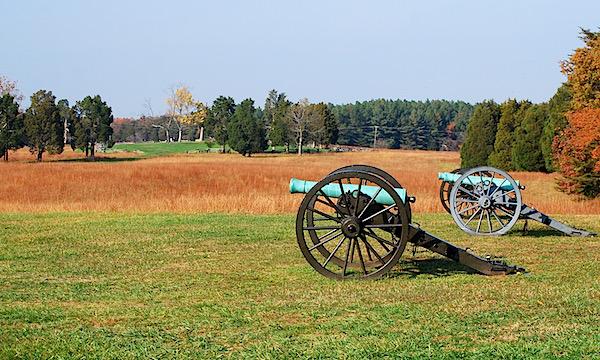
National battlefields and military parks such as Manassas (above) and Fredericksburg and Spotsylvania are prominent in the National Park System, but how many battlefields does the Park Service need?/Kurt Repanshek
Unfortunately, the problem only keeps worsening. How many battlefields do we need to interpret the Civil War, for example? There were 5,000 separate actions. Cannot some of the 'action' revert to the states? And parkways, How many of those do we need? While I personally use the George Washington Parkway, I am not convinced it needs to remain a national park.
Mount Vernon is not a national park. Does that in any way lessen its significance? Is not George Washington still a national figure? Then there is Steamtown, in Scranton, Pennsylvania. Sure, let's have a great park acknowledging railroad history, but why can't it managed by a state? Steamtown was blatantly intended to boost Scranton's local economy. Why should Uncle Sam be doing that?
And the urban parks. We all love open space. But why must the federal government be expected to fund them all?
Granted, it seems that government always has another pot of money. The problem is: It is always someone else's pot. No doubt, decommissioning just one aircraft carrier would fix the backlog, but that will never happen. American culture just doesn't work that way. That aircraft carrier employs people, too. We have to fix the number of parks within what Congress is willing to give the National Park Service, or Congress will not hear a word.
Priority Three: Establish Zero-Based Budgeting
Toward that end, the National Park Service needs to implement a zero-based budgeting system that will look at all of the regional and Washington, D.C., offices and programs. Does calling redundancy 'regional' make it right? Why can't every superintendent report to a leaner agency? But no, the staffing adjustments always come at the bottom, followed by a cry for more volunteers. Somewhere in that pile of news releases, I believe I saw that one. How can young people be expected take any 'initiative' on a salary of $10 a day? You want more 'minorities' to believe in the parks'and work in them? Then pay them an honest wage.
Priority Four: Put History Back in the Parks
None of this is of any surprise to historians. In various forms and guises, they have seen all of these problems before. This is to explain my pet peeve. It's actually misleading to create a 'historical' park. After all, every park comes with a history. Then let's see that visitors learn it, whether the park be Gettysburg or Yellowstone. The Park Service should start with every employee, including everyone working for the concessionaires. It's not just a job, folks. It's a calling. If you just want a job, McDonalds is hiring, and there should be plenty of openings at Burger King. In the parks, you work for generations yet unborn, and their legacy begins with your knowing that.
Start with your park's administrative history. You say your park doesn't have one? Then get an M.A. and write it as a thesis, or perhaps the dissertation for your Ph.D. Every park should have an up-to-date administrative history. How did we get this park? What is its mission? Where have we failed the public in the past? And believe me, we are always failing the public. That is what an administrative history is meant to correct for the future.
Nor should administrative histories be limited to individual parks. The system itself needs many such histories, broadly targeted to system issues. Can anyone doubt the importance of the role of concessionaires in park history? They have power. They have money. How does that influence the parks for good or ill? Where is the comprehensive history of the relationship between the National Park Service and the concessionaires? Here again, there is no such history, and some employee'with proper incentive from the agency'just might take the initiative to write it.
And fee policy. The last time the Service completed a history of that was in 1982. An update is long overdue. After all, fees now stay with the parks. Consider the 'backlog' again. Can it truly be erased just by changing the fee structure? We simply don't have enough history to guide us. We are still blindly looking forward without honestly looking back.
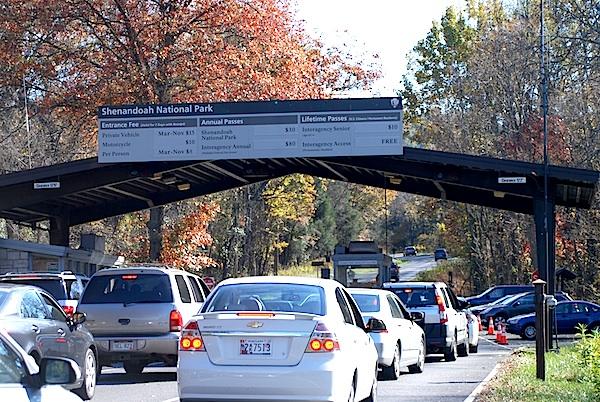
How far can higher fees go towards erasing the Park Service's maintenance backlog?/Kurt Repanshek
Nor does it end with fees and parks. Key documents such as the organizational charts and lists of all National Park Service Management personnel have not been updated since the late 1980s. See Organizational Structure of the National Park Service 1917 to 1985. Another key document, Historic Listing of National Park Service Officials.
And let us not forget the directors. At one time they were inclined to write useful and important books, or extensively shared their career findings with professional historians. The lessons a director learns are invaluable. The last to detail his experiences in a book was James Ridenour. The Service should commission a history of the management decisions and operational successes/failures of every director that ever served.
So, too, the National Park Service Thematic outline was last updated in 1987. Perhaps it is time for a new update. I am not referring to the 1994 thematic outline, but to the original thematic outline that dated back to 1929 when it was first conceived, History and Prehistory in the National Park System and the National Historic Landmarks Program.
If there is ever a commission charged with recommending the total number of parks which should be kept'and which should be transferred to state, local, or private authorities'this document will be needed. Better said, it will be essential.
Priority Five: An Educated Workforce
It is no wonder that rank-and-file members of the Park Service are drifting, too. An educated workforce is a confident workforce, but where are the materials supporting that education? Fortunately, there the future is somewhat brighter, thanks to historians from outside the agency. But again, employees must be given incentives to read their books.
Did I say books? You bet I did. Now that would be an 'initiative' capable of making a difference tomorrow morning'and without asking Congress for additional support.
Every employee needs to read those books. Of the six or seven books I would assign, one tops my list. That would be Alfred Runte's National Parks: The American Experience, the best book written on the national parks of all time. Think, then, of the thousands of employees in the Park Service who have never read it, including the current director of the National Park Service himself.
At least, if Director Jarvis has read it, he has never told me, or acted as if he did. A director who reads for effect would never be making the mistakes we see today. As one reviewer said of National Parks: The American Experience in an article for The Washington Post, 'At Interior, on Capitol Hill, and in the White House, National Parks is a must.'
A must does not mean a choice. Of course, some employees choose to read; my point is that all should made to read as a prerequisite for employment. My other titles would include:
1. The relevant administrative history'or its equivalent'of the employee's current park.
2. Alfred Runte, Yosemite: The Embattled Wilderness (Lincoln: University of Nebraska Press, 1990).
3. Lary M. Dilsaver, editor. America's National Park System: The Critical Documents. Lanham, MD: Rowman & Littlefield Publishers, 1997
4. Polly Welts Kaufman, National Parks and the Woman's Voice: A History. Albuquerque, NM: University of New Mexico Press, updated ed., 2006.
5. Horace M. Albright as told to Robert Cahn. The Birth of the National Park Service: The Founding Years, 1913-33. Salt Lake City: Howe Publications, 1985).
6. Richard West Sellars, Preserving Nature in the National Parks: A History New Haven: Yale University Press, 1997).
The Park Service should make it simple and provide these books on employment, with the appropriate 'testing' as each employee advances. A test? Yes again, a test. These are government jobs subject to Civil Service approval. And even the Director should not escape. The public deserves to know that the Service knows what it is managing. That backlog did not emerge just out of the blue.
Even without any ' new' history, we have a rich mother lode of information about our parks in both print and electronic format. This information represents the accumulated wealth and experience of generations of national park employees. I would like to see nothing better for 2016 than to make this heritage of information easily available to all. Much of it can be found now on the web but no one knows where to look or what to look for. Many capable and hardworking people are trying to correct the issue. Let us support them and get the job done.
Information that cannot be found is useless. So yes, add the National Parks Traveler to my list of must-have sources that every employee should know'and want'to follow.

The National Park Service needs to revive its commitment to history/Kurt Repanshek
Allow me to close by reminding everyone what a scholar does. In the National Park Service, we in the History Division kept our agency 'out of trouble' by keeping the director'and many others'fully informed. Our job was to make them 'look good' in the eyes of Congress, the president, and the public. I did that job with pride.
As proof of my comments above, look no further than what happened to the History e-library site after I retired. There has not been a single update in three years. Most of the existing links to online studies are broken and the site still claims 397 parks. Really, now?
The immense collection of National Park Service studies, reports, and information on this web site just collapsed due to lack of any support or attention. Why was a decade of taxpayer-supported effort not fully lost? Because, once I realized what was happening, I transferred all of the existing 3,500 studies to my personal web site and added a few thousand more. The material is still available, but not because the Park Service wanted it available. I did it as my personal contribution to history, and it didn't cost the taxpayers a dime.
You wonder why I get frustrated'and even angry? Because that is not how government'your National Park Service and mine'is supposed to work. The History Division is not some localized group of history buffs. Sure, we all get behind, but three years and a busted website? Now what? More things like 'Washington Slept Here?' History is what Washington and the country did. The National Park Service is America's face to the world, and all the History Division is allowed to do now is put lipstick on another news release.
How could anyone possibly blow the history of the National Park Service during its centennial, of all things? A good question, and here is how they are blowing it. Upper management has thrown history in the trashcan and still expects the nation to be inspired. Trading on the prestige of the agency, they then expect the public to go along.
In the past, that would not have happened. Even the crippling backlog, if not entirely erased, would certainly have been addressed. Nor would the cost-savings have come at the price of history. Here again, anyone can trot out the Organization of American Historians and say that the profession 'approves.' Well, the professional historians that matter do not approve, and I have talked to every one of them.
History is not a toy. The national parks deserve our very best, both in terms of management and professional history. Now, start making friends with the history of your favorite park. And do urge its managers to do the same.

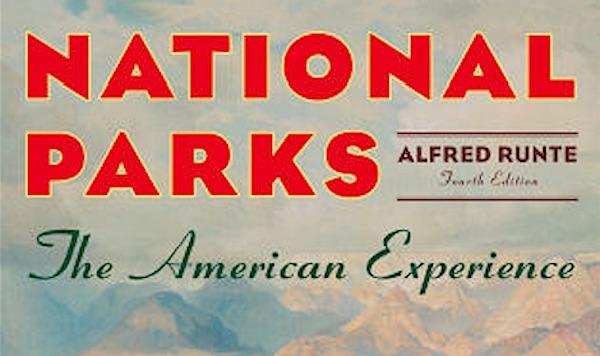

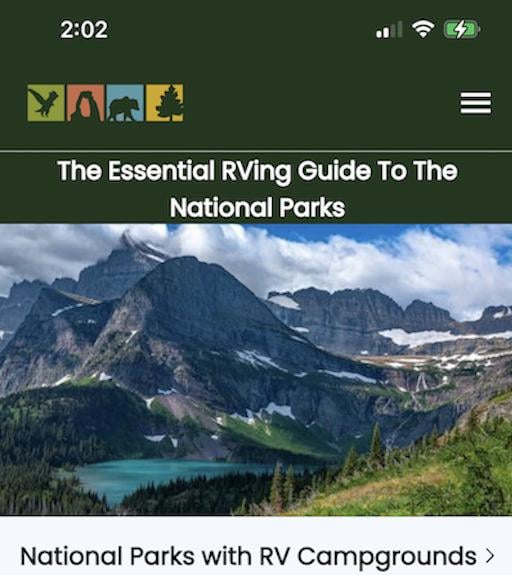
Comments
And despite that the temperatures haven't risen for nearly two decades. Thanks for the evidence breaking the link.
We don't have much disagreement there except I am not as concerned about resource extraction. You should read Runte's book about Yosemite. It notes how the Park had its boarders reduced because of its demands for purity. If it had been more willing to accept resource exploitation, more of the lands around the park would have been under its control. Instead, these lands were removed and the NPS lost total control. Thats not the point Runte made in telling the story but it is the reality of what happened.
And so far there is zero evidence that this has caused any change in the environment. All prediction models have been completely incorrect when correlating the rise of CO2 to temperature change. The facts are that while there has been a steady rise of CO2, global temperatures have been flat for two decades. If rise of CO2 has some effect, no one has shown it yet.
EC and beachdumb,
No use in arguing about climate change. Reality will prevail, regardless of what we say.
EC,
I think the National Park Service's obsession with "purity" in the past was an egregious mistake. For example, turning down proposals to add Mount Baker, Mount St. Helens, Mount Adams, Mount Hood, and Mount Shasta to the National Park System because we already had a Cascade volcano in Mount Rainier National Park has proven to be extremely short-sighted, in light of the damage done to all of them by industrial exploitation.
I agree that limiting Yosemite National Park's boundaries was another example of a lack of vision. Adjacent lands have been degraded by Forest Service mismanagement since 1890. For example, the recent Rim Fire burned in both Yosemite and the Stanislaus National Forest. The National Park Service's post-fire restoration program for Yosemite has been mainly to stabilize erosion, repair roads and trails, and cut a few hazard trees. The estimated cost: $386 million. In jarring contrast, the U.S. Forest Service's post-fire "restoration" program for adjacent Stanislaus lands has included massive "salvage" logging and roadbuilding, estimated to cost taxpayers $15 million or more. Furthermore, there is serious concern about the harm this industrial logging will cause to native ecosystems and wildife, such as the imperiled spotted owl.
However, it is not too late to add these lands to Yosemite National Park. Under National Park Service management, damage from past industrial uses can be allowed to heal. Some of our most beloved existing existing national parks, such as Great Smoky Mountains, Mammoth Cave, Big Bend, and Redwood are such restoration parks. There are many other significant places already under public ownership that are damaged, but needing National Park System protection to allow them to recover their natural integrity.
One urgent example is the need to expand Theodore Roosevelt National Park to include the surrounding 1-million-acre Little Missouri National Grasslands. U.S. Forest Service "multiple-use" management has allowed this irreplaceable ecosystem to be harmed by a host of industrial uses. This exploitation has gotten so extreme that fracking is now a severe threat to much of the national park and even TR's beloved Elkhorn Ranch is threatened by road building and gravel mining. Some would say we cannot afford to expand Theodore Roosevelt National Park to include these already-public lands. I say we cannot afford not to do so.
Some really good comments here, some of them even worthy of an article or two. First, about Yosemite. Once the federal government had completed the surveys of the high country, the handwriting was on the wall. Settlement claims under the Homestead Act, etc., then proliferated, culminating in the late 1880s. The park of 1890 was already hamstrung by 65,000 acres of private inholdings--or more. The sugar pine stands were the real prize, and indeed the target of the boundary reductions of 1905. As for "accepting" those private inholdings--and resource extraction--there was little leadership around TO accept it. No Park Service for another 11 years, certainly, and Interior still ruled by the General Land Office, still rapidly giving the public lands away. And of course, that was the law of the time. Gifford Pinchot's U.S. Forest Service was meant to halt the giveaways by including huge swaths of the public domain in forest reserves. Theodore Roosevelt complied by adding enormously to those reserves, but himself left office in 1909.
This is to reemphasize the battle of today. It's over the public lands, not just the national parks. How much of the public lands do we want to keep--as in should keep? Right now, there is a fire sale on public lands in the desert for wind and solar installations. The lands are "leased," not sold, but the lessors scrape them bare. They won't be desert again for centuries, whether as carbon sinks or habitat. How much of the rise in CO2 is due to the millions of acres either deforested or paved every year? Ah, but your government isn't telling you that, is it? It is only talking about emissions needing technology-based controls, i.e., corporate "solutions" again.
Our national parks are caught in the middle, and yes, this is to explain Owen Hoffman's point. How can we feel like "celebrating" when we don't even know what will be left to celebrate? That again is where history comes in. We've been on the decks of this ship before, even if some people don't like that analogy. Our only advantage in the past was to have a smaller country with still enough open space to feel "open." That said, we were tearing it apart even then, only now to see its actual limits.
I disagree with E. O. Wilson that expanding parks will solve the problem. Only limiting population will solve the problem, but you dare not say that at Harvard and Berkeley, lest you rattle the windows of political correctness. And so you say climate change, whose PC code is "acceptable." We can do something. . . We are not bound by limits. . . With human ingenuity, we can make the desert bloom and the problem "go away." You have to give them an A for trying, but seriously, does anyone believe that is how Mother Nature works?
Good thoughts, people. Keep them coming. This is the only site I know asking through history how to make 2016 both meaningful and "relevant." Yes, a new word from our friends in the Park Service! Are we relevant? Just last week wasn't the word diverse? History, good people. All of this is meaningless unless you know the real forces from whence you came.
Michael -
Two big differences between us. First, I don't share your pessimism. I think man can exploit the earth for his own good without long term negative impacts. As you yourself noted several of today's parks are "restoration" parks. Parks that in a hundred years or less have erased the "scars" of man.
Second, I understand how small man is in the scheme of things. Over billions of years massive changes have occured to the climate, the soils, the geography et al. None of that had anything to do with man. Man is but a flea on the butt of the elephant. If we end a species is that earth shattering? Over time, billions of species have come and gone and we had nothing to do with that. Were those changes "bad"? Is change necessarily "bad"? As "man" should we work to stop naturally occuring die offs of a species?
You are absolutely right "reality will prevail" and in the grand scheme of things, we won't have a single thing to do with it.
I feel like I just read a diatribe written by Grampa Simpson while he shook his fist and yelled at those durn kids to get off his lawn. Required reading with tests? States taking over NPS sites? Accusations of the agency not teaching administrative history and mission? Seriously, you totally sound like someone who spent their entire career isolated in Washington, and have gained, what you think is a deep understanding of what it means to work in the present day National Park Service. Sir, with all due respect, while I find some of your ideas semi-interesting, most are wrong and ill-informed. I have worked for the NPS for close to 15 years, and I have never drank the kool-aid. The Park Service is flawed, it has a history of poor management, and is and will always be in need of improvement. However, you seem to have a poor grasp on what actually ills the agency and how to make improvements.
Every park I have ever worked at (8 different parks now) has made me, usually on day 1 or 2 of my new job, learn about the administrative history of that particualr park. Usually this is done by handing me the foundation documents, learning the purpose and significance of why the park is a park. How it came to be. The mission is drilled into every park service employee. Seriously, do you honestly not know that this is happening across the NPS? That employees are taught this when they onboard. Perhaps I have just been lucky and have worked at 8 special NPS sites and they are the only 8 sites that require employees to learn this...but I think not.
Secondly, you are exactly what is currently wrong with the NPS. Backwards thinking, and a stuck in the past mentality, will not lead us into the future. Your list of demands reads like a to do list from a 1960s NPS onboarding document.
I have seen lots of positve changes in the Park Service. We still have many things that need improvement, but nothing I have read here will make a change for the better.
Mundsy -
With respect, your note and your pointed comments would be more meaningful if you clarified who the 'you' is you are addressing it to. Author of the original article? Author of the last previous comment? Etc?